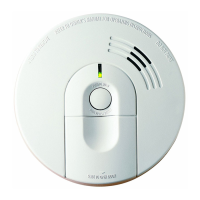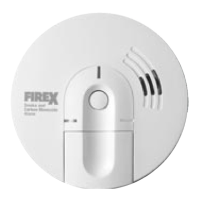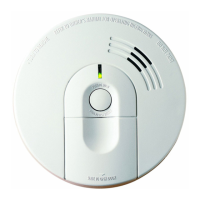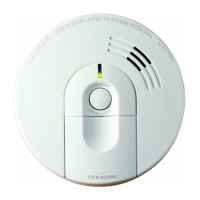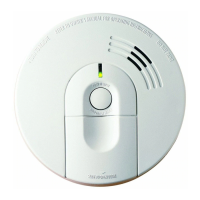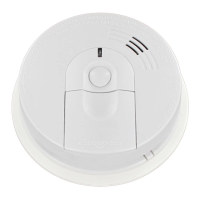SMOKE ALARM FEATURES
•
This smoke alarm is powered by 120V AC and a 9-volt battery back-up
source. AC/DC smoke alarms offer added protection in the event of a
power failure or a drained battery.
•
Unique power connector prevents interconnection with incompatible
smoke alarms or security systems.
•
This smoke alarm may be interconnected with as many as 11 other Firex
model FADC, AD, ADC, PAD or FX1218 smoke alarms, and as many as
6 Firex model ADH heat alarms for a total of not more than 18 intercon-
nected devices.
•
Optional tamper-resist feature can serve as a safeguard against tampering.
•
The smoke alarm will sound a short beep about once a minute if the bat-
tery is weak or improperly connected. Item 4718 also blinks the red LED
4 times each minute to help identify the alarm.
•
Green and red LED indicator(s) show when the smoke alarm is receiving
AC power, working under normal operation, in alarm, or under false
alarm control.
•
Loud alarm horn—85 decibels at 10 feet—sounds to alert you to
an emergency.
•
This alarm incorporates the internationally recognized horn signal for
evacuation. During alarm mode, the horn produces three short beeps fol-
lowed by a 2 second pause and then repeats. This pattern is somewhat
different than the previous alarm sound, which continually beeped.
•
Test button checks smoke alarm operation and activates False Alarm
Control feature which quiets unwanted alarms for up to 15 minutes.
•
Item 4718 features a latching LED which blinks the initiating alarm’s red
LED 3 times each minute until manually reset.
•
Item 4718 has a ramp-up test horn feature which emits 2 reduced-volume
beeps before reaching the full 85db level during testing.
1
120V AC
Ionization
Smoke Alarm
with 9V Battery
Back-up
110-1082B
MODEL FADC
PLEASE READ AND
SAVE THIS MANUAL
Installer: Please leave this
manual with the product.
The ionization type alarms are generally more effective at detecting fast, flaming
fires which consume combustible materials rapidly and spread quickly. Sources of
these fires may include flammable liquids or paper burning in a waste container.
The photoelectric type alarms are generally more effective at detecting slow,
smoldering fires which smolder for hours before bursting into flame. Sources of
these fires may include cigarettes burning in couches or bedding. However, both
types of alarms are designed to provide adequate detection of both types of fires. If
you desire the benefits of both systems, you should install smoke alarms that
combine in one alarm both photoelectric and ionization sensing technologies.
